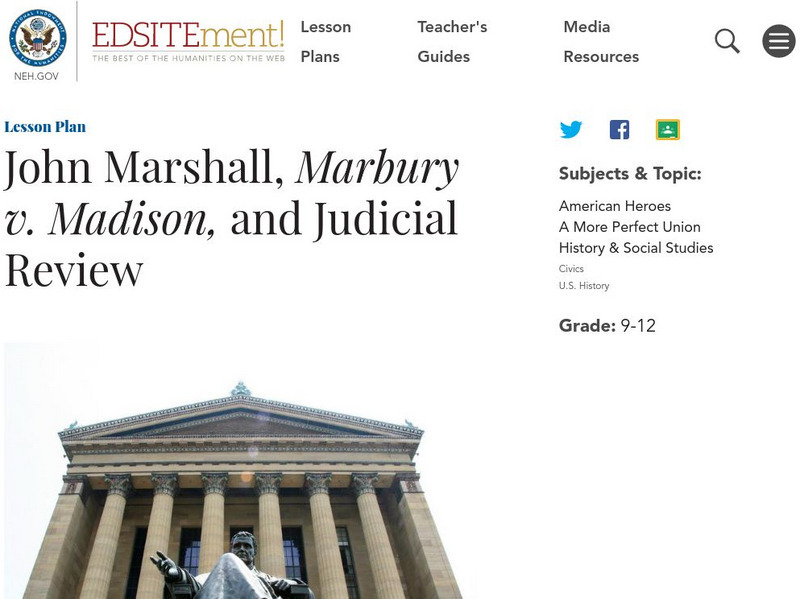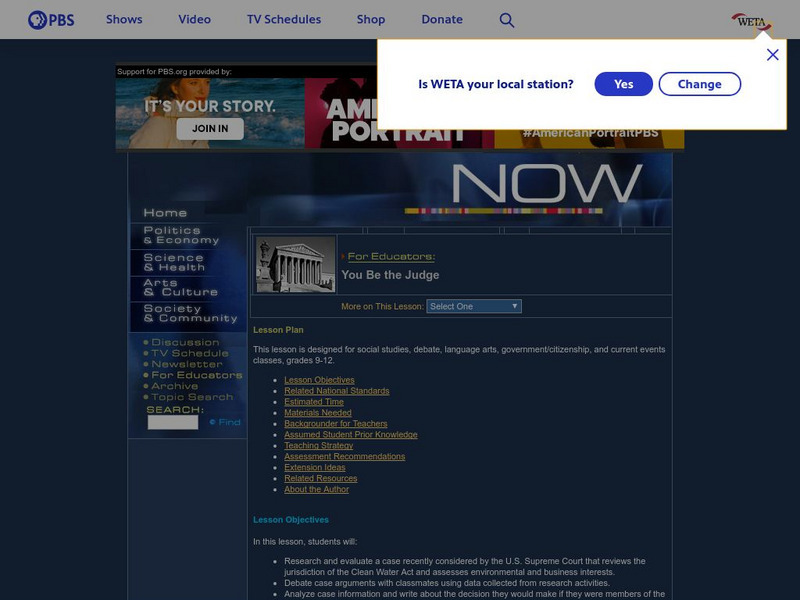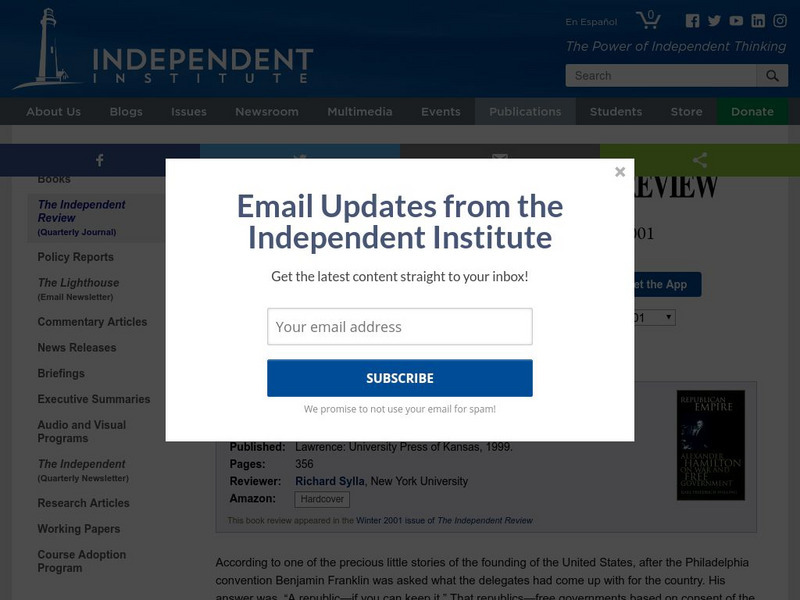Curated OER
Reflections on Judicial Power - Part I
Students research the Constitutional provision for the Judicial branch of government. They examine different U.S. founder's positions on the relative strength of the judicial branch and act as a review court for Marbury vs. Madison.
Curated OER
Ch 8 Civics
In this government worksheet, students locate and identify various vocabulary terms related to the government and law. There are fifteen words located in the puzzle.
Curated OER
US Government: Supreme Court
Students explore the powers of the Supreme Court. In this Judicial Branch lesson, students define vocabulary regarding the branch's responsibilities, take notes on a video regarding the branch, and discuss the powers of the branch in a...
Curated OER
History of Supreme Court
Learners study the role of the U.S. Supreme Court in U.S. history. They explore current events about the U.S. Constitution and discuss the Marbury v. Madison case from 1803. They identify the term "judicial review" and judicial...
National Cable Satellite Corporation
C Span Classroom: Interactive Supreme Court Timeline Case Study
In this interactive lesson, students will identify important Supreme Court cases, evaluate their decisions, explain the precedents they established, and analyze their importance to our society today.
PBS
Pbs: How the Supreme Court Affects the Lives of Teens (Lesson Plan)
Objectives for this lesson include describing the structure and function of the Supreme Court, looking at important decisions, and discussing recent rulings and issues.
This Nation
This Nation: Marbury v. Madison, 5 u.s. 137 (1803)
This resource provides the full text of the Supreme Court's decision in this landmark case, written by John Marshall.
Digital History
Digital History: War on the Judiciary
The Judiciary Act of 1801 was a final attempt by the Federalists to control the judicial system before the Democratic Republicans took over. Read about the repeal of the act, which resulted in a landmark Supreme Court decision, Marybury...
National Endowment for the Humanities
Neh: Edsit Ement: John Marshall, Marbury v. Madison, and Judicial Review
In this lesson plan, students will consider "John Marshall, Marbury v. Madison, and Judicial Review-How the Court Became Supreme." The plan includes worksheets and other student materials that can be found under the resource tab.
US National Archives
Nara: Charters of Freedom: The Power of the Courts: Marbury vs. Madison, 1803
Website with primary source material on the making of the U.S. government and Constitution explains how Marbury vs. Madison brought the power of Judicial Review to the Supreme Court.
PBS
Now With Bill Moyers: You Be the Judge
Study and evaluate a recent U.S. Supreme Court case that reviews jurisdiction of the Clean Water Act and assesses environmental and business interests. Research and debate a case argument, and analyze case information in order to make a...
Other
Touro Law Center: William Marbury vs. James Madison
Transcript of the landmark court case that established the constitutional principle of judicial review. Judicial review is the concept that the federal judiciary has final power as to whether an act of the Congress or the Executive...
Annenberg Foundation
Annenberg Classroom: The Pursuit of Justice
This book analyzes 30 Supreme Court cases chosen by a group of Supreme Court justices and leading civics educators as the most important for American citizens to understand. An additional 100 significant cases included in state history...
Independence Hall Association
U.s. History: A Federalist Stronghold: John Marshall's Supreme Court
John Marshall was the fourth Chief Justice of the Supreme Court, but his decisions, especially in Marbury v Madison, set the influence of the Court for the next many decades. Read about Marshall's decisions and why they were so important.
PBS
Wnet: Thirteen: The Supreme Court: Landmark Cases: Marbury v. Madison (1803)
PBS features a summary of the landmark Supreme Court case of Marbury v. Madison, which deals with the principle of "judicial review." Opinion written by Chief Justice John Marshall.
Thomson Reuters
Find Law: Article V: Judicial Review
A discussion of the proposition that ratification of constitutional amendments is exclusively within the purview of Congress, either because of commitment or because the courts lack basic criteria of determination to pass on them.
US Government Publishing Office
Ben's Guide to u.s. Government: Judicial Branch (6 8)
This site from Ben's Guide to U.S. Government provides a brief overview of the judicial branch of the federal government. Discusses the origin of the judicial branch, the concept of judicial review, and functions of the judicial branch....
iCivics
I Civics: Marbury v. Madison (1803)
This mini-lesson covers the basics of the Supreme Court's decision that affirmed the Court's power of judicial review. Students learn how Congress tried to add to the Supreme Court's Constitutional power, how the Supreme Court rejected...
iCivics
I Civics: Judicial Review
This lesson explores the case that established the power the Supreme Court has today. Students will learn how the decision in Marbury v. Madison influenced the structure of the third branch, and how the Court's use of judicial review can...
US Government Publishing Office
Ben's Guide to u.s. Government: Judicial Branch (9 12)
Provides a brief overview of the judicial branch of the federal government. Discusses the origin of the judicial branch, the concept of judicial review, and functions of the judicial branch. Links to more information about the U.S....
Other
Independent Institute: Alexander Hamilton on War and Free Government
This is a review of a book by Kurt-Friedrich Walling. The review discusses how Hamilton wanted to create a republican empire based on consent but able when threatened to generate enormous military power, and how this was in dispute with...
Other
4 Law School: Marbury v. Madison
This article breaks down the facts of the Marbury v. Madison case, and briefly summarizes the Justices' opinions.
















